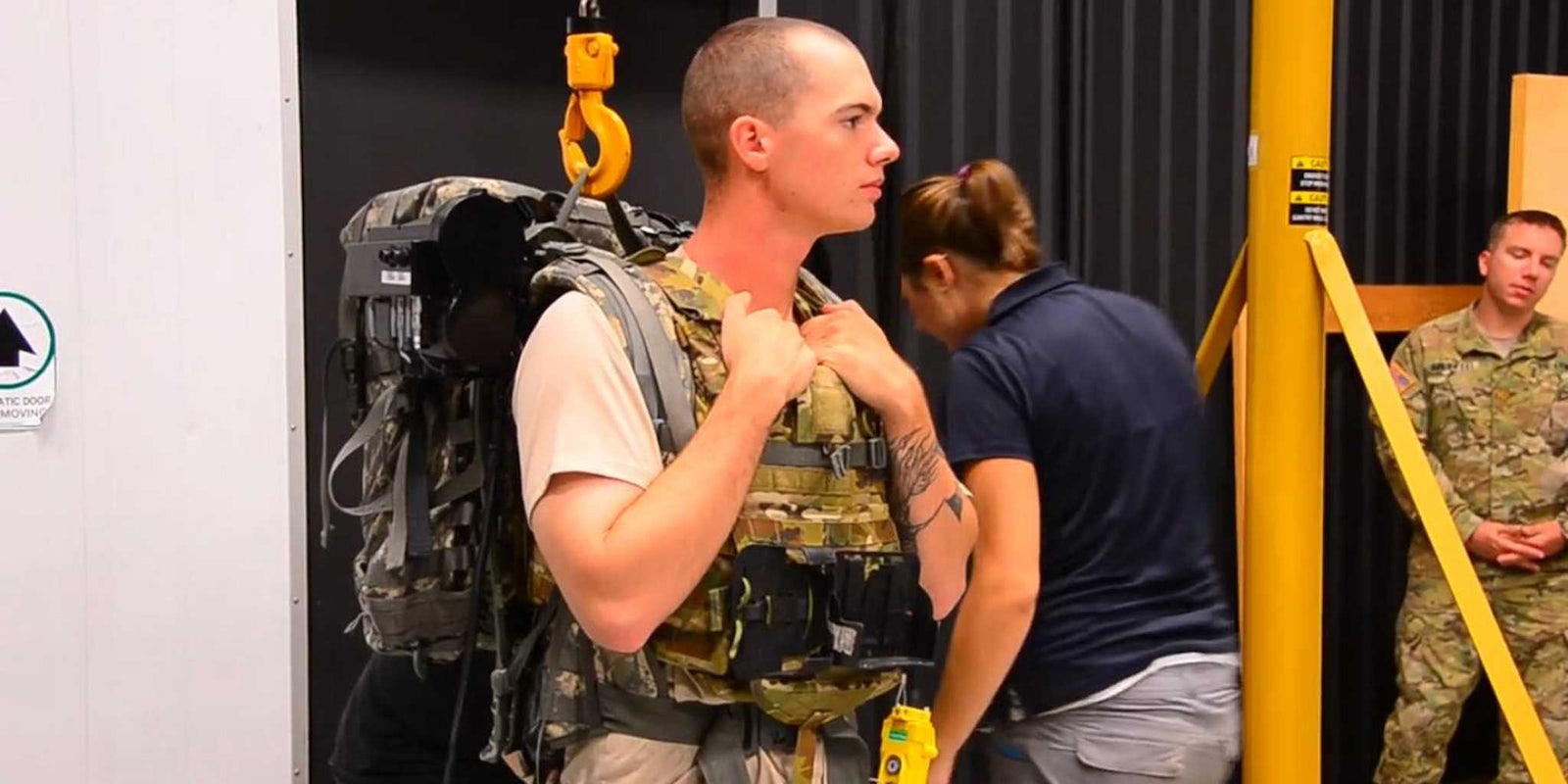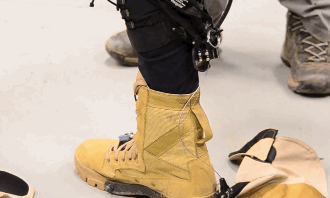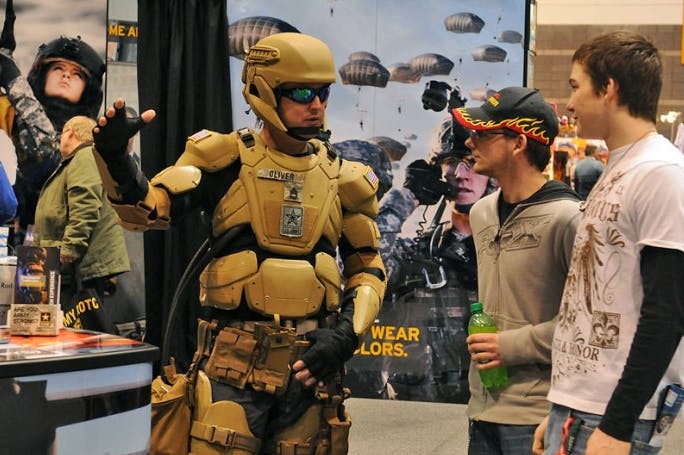What if our armed forces had no physical limits?
This week, Harvard researchers unveiled a small-scale exoskeleton that can supposedly augment the wearer’s speed and strength. It is not a mechanized metallic suit but a much lower-key collection of straps and cables worn on the body. The cables pull on a user in conjunction with his or her natural movements such that they reduce muscle impact.
Here’s a demonstration (on an unmoving soldier) of how the system reduces Achilles tendon strain:
The government has explored human augmentation off and on since 1985. That’s when retired U.S. General Paul Gorman delivered his own concept design for a robotic exoskeleton to be worn by a soldier to the Defense Advanced Research Projects Agency (DARPA), which is responsible for the research and development of Harvard’s exoskeleton. He dubbed it “SuperTroop,” and it looked like a science-fiction dream. The powered suit would be resilient enough to withstand all order of attacks: biological, electromagnetic, and even .50-caliber gunfire. The suit’s embedded sensors would multiply the human user’s vision and hearing capabilities, and it would make use of thermal vision to see in the dark.
Though the necessary technology and computing power didn’t exist to bring SuperTroop to life at the time, that’s starting to change. Exoskeletons are an object of active military interest. The Navy has a utilitarian suit designed to help its sailors carry heavy equipment. Since 2010, Raytheon has been developing a powered robotic suit for the Army called XOS 2 that can reduce physical burden by a factor of 17; with it, if you pick up your 180-pound best friend while wearing the suit, you’ll only perceive holding a little over 10 pounds.
The show-stealer, however, is a project called TALOS, which stands for Tactical Assault Light Operator Suit. In development since 2013, TALOS is a massive collaborative undertaking between 56 corporations, 16 government agencies, 13 universities, and 10 national laboratories to develop weaponized armor out of the same vein as Iron Man. The military’s specifications state that the finished product must be “bulletproof, weaponized, have the ability to monitor vitals, and give the wearer superhuman strength and perception.”
TALOS is far from complete, and development has been subject to delays—perhaps no surprise for a project so ambitious in scope—though one publicly unveiled prototype appears below. The project has been criticized for being overly ambitious.
Former Air Force Chief of Staff General John Jumper says this is nothing less than what it will take to succeed at war: “We must give the individual soldier the same capabilities of stealth and standoff that fighter planes have. We must look at the soldier as the system.”
General Gorman’s concept design perhaps inspired a generation of thinking: that the next soldiers to dominate the battlefield will be those with the best robotic enhancements.
H/T The Atlantic | Screengrab via IEEE Spectrum




